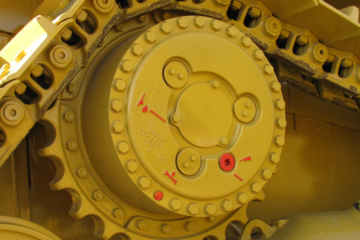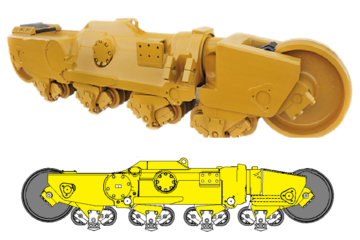Large Hydraulic Shovels and Rope Shovels are not built to walk long distances. Short distances is all they can do. The general rule of thumb is no more than 7% of the overall machine hours should be spent walking the machine.
Take an example, our shovel aims to achieve 22,000 working machine hours as the useful life of the Undercarriage. This means that the machine should be limited to walking no more than 1,540 hours in total.
To illustrate this example further, say the undercarriage costs $2,500,000 per side thus total of $5M for both sides with a budgeted life of 22,000 hours. Budgeted cost per hour would be $227/Hour. This also means that every hour walked is supported by 14 hours worked at the face. Should the machine exceed 7% or 1,540 hours of walking time, this will reduce the overall available working hours on the undercarriage at the work face. Thus, when the machine goes beyond 7%, every 1 percentage point over 7% will cost a minimum of $50,000 in lost undercarriage life available at the work face. The number could be upwards of this if the consumption of walking time occurs earlier in the undercarriage life
To manage the walking percentage and forecast available working life, you need a few critical things:-
- A Regular scheduled Undercarriage inspection program on Hydraulic Excavators and Rope Shovels.
- An Undercarriage Inspection and Management system such as TrackTreads: tracktreads.com to record and manage the data and forecasts
- A team of Reliability Engineers to regularly review the data and make recommendations of corrective actions that need to be implemented in the field.
- Mine operational planning. A proactive approach to production planning to limit travel time and maximize production and utilization.




0 Comments